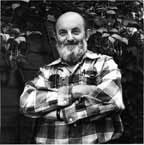
Click here to buy Sale Posters!
Ansel Adams Bio (1902 - 1984)
 Ansel Adams, landscape photographer and environmentalist, was born in San Francisco on February 20, 1902. Though he and his family survived the great earthquake of 1906, he was permanently marked by the event when one of its aftershocks threw him to the ground and badly broke his nose. A year later, his family's fortune evaporated as result of the financial panic of 1907. This sudden loss of affluence seems to have effected his parents more than it did him.
Ansel Adams, landscape photographer and environmentalist, was born in San Francisco on February 20, 1902. Though he and his family survived the great earthquake of 1906, he was permanently marked by the event when one of its aftershocks threw him to the ground and badly broke his nose. A year later, his family's fortune evaporated as result of the financial panic of 1907. This sudden loss of affluence seems to have effected his parents more than it did him.
Not fitting in at school and feeling selfconscious about his appearance, Adams led a somewhat reclusive childhood. Eventually, he left school and was tutored at home. He displayed early on an appreciation for nature and spent long hours exploring the wonders and wilds of the Golden Gate area.
"I don't condemn a snapshot for what it is. I do, however, object to people's making a snapshot and then imposing an aesthetic value on it." ~ Ansel Adams, Playboy Magazine (May 1983)
While still an adolescent, Adams taught himself to play the piano and for several years pursued a career as a concert pianist. Though he eventually gave up music for photography, the rigors of his musical training prepared him for the study of photography and the painstaking attention to detail that he applied to its techniques and processes.
His first photographs were taken in Yosemite with a Kodak No. 1 Box Brownie his parents had given him. Yosemite would become a favorite subject of his. His frequent visits, as well as his involvement with the Sierra Club, gave him ample opportunity to study and photograph its wonders.
"There are always two people in every picture: the photographer and the viewer." ~ Ansel Adams, Playboy Magazine (May 1983)
In 1927, he met Albert M. Bender, an insurance magnate and patron of the arts. Bender supplied Adams with the encouragement and financial assistance he would need to abandon his musical career in favor of photography. Soon after, he published his first portfolio, Parmelian Prints of the High Sierras.
Among those who influenced his work were Paul Strand, Edward Weston and Alfred Stieglitz. His first one-man show was presented by San Francisco�s DeYoung Museum in 1932. A year later, the Delphic Gallery gave him his first New York show. During the next fifty years, Ansel Adams established himself as one of America's greatest landscape photographers. He produced thousands of elegant and moving, technically flawless, black and white photographs of our most magnificent landscapes. He more than any other photographer promoted photography as an art form.
"In wisdom gathered over time I have found that every experience is a form of exploration." ~ Ansel Adams
In 1946, at the California School of Fine Arts in San Francisco (now the San Francisco Art Institute), Adams helped establish the first academic department to teach photography. His books include My Camera in the National Parks (1950), This Is the American Earth (1960), Ansel Adams: Images 1923-1974 (1974), Photographs of the Southwest (1976), Yosemite and the Range of Light (1979), and a series of books on photographic techniques. His Zone System, a darkroom technique of exposure and development, is studied to this day.
�The love that Americans poured out for the work and person of Ansel Adams during his old age, and that they have continued to express with undiminished enthusiasm since his death, is an extraordinary phenomenon, perhaps even unparalleled in our country�s response to a visual artist.� ~ John Swarkowski, Adams�s Classic Images (1985)
Adams received three Guggenheim fellowships during his career and in 1966 he was elected a Fellow of the American Academy of Arts and Sciences. In 1980 Jimmy Carter awarded him the Presidential Medal of Freedom, the nation's highest civilian honor. He passed away on April 22, 1984 due to heart failure aggravated by cancer.
These are among Ansel Adams' celebrated photographs and prints: Aspens, Northern New Mexico, 1958; Half Dome, Merced River, Winter; Moon and Half Dome, Yosemite National Park, 1960; Tenaya Creek, Dogwood, Rain, Yosemite National Park, Ca 1948; Our National Parks; Mt. McKinley Wonder Lake, Denali National Park, Alaska, 1947; Mt. McKinley Range, Clouds, Denali National Park, Alaska, 1948; Nevada Fall, Rainbow, Yosemite National Park, 1946; Trilogy I I I; Canyon de Chelly; Moonrise, Hernandez, New Mexico, 1941; Monolith, The face of Half Dome, Yosemite National Park, 1927; Pine Forest in Snow, Yosemite National Park, 1932; Oak Tree Sunrise; Rose and Driftwood, San Francisco, California; Birds on a Beach; Aspens, Northern New Mexico, 1958 Authorized Edition; Yosemite National Park; Mt. McKinley Range; El Capitan, Winter Sunrise, Yosemite National Park, 1968; Oak Tree, Sunset City, California, 1932; The Tetons and the Snake River; Bridal Veil Falls, Yosemite National Park; Tenaya Lake, Mt. Conness, Yosemite National Park, 1948; Oak Tree, Snowstorm, Yosemite National Park, 1948; Clearing Winter Storm, Yosemite National Park, 1944; The Scripps Pier; Nevada Fall; Redwoods, Founders Grove; Birds on a Beach; Sand Dunes, Sunrise, Death Valley National Park 1948; Range Clouds; Thunderheads; Pacific Vista; El Capitan, Winter; Tetons And Snake River; Thundercloud, Ellery Lake; Oaktree Sunrise. Books on Ansel Adams: Examples: The Making of 40 Photographs (Paperback) by Ansel Adams, Ansel Adams: An Autobiography (Hardcover) by Ansel Adams Publishing Rights Trust. (www.aceswebworld.com)
Copyright � 2004- by Ace Toscano. All rights reserved.
(We are not affiliated with sites or advertisers promoted in paid ads appearing on this or any page.)
